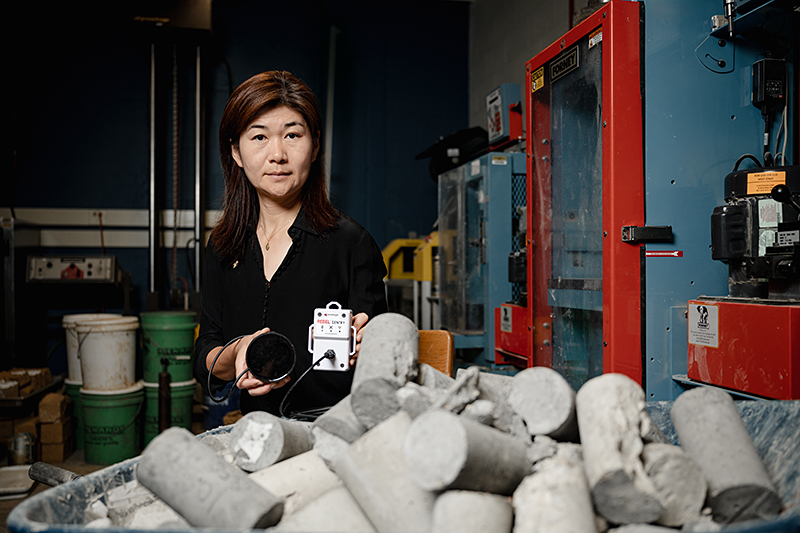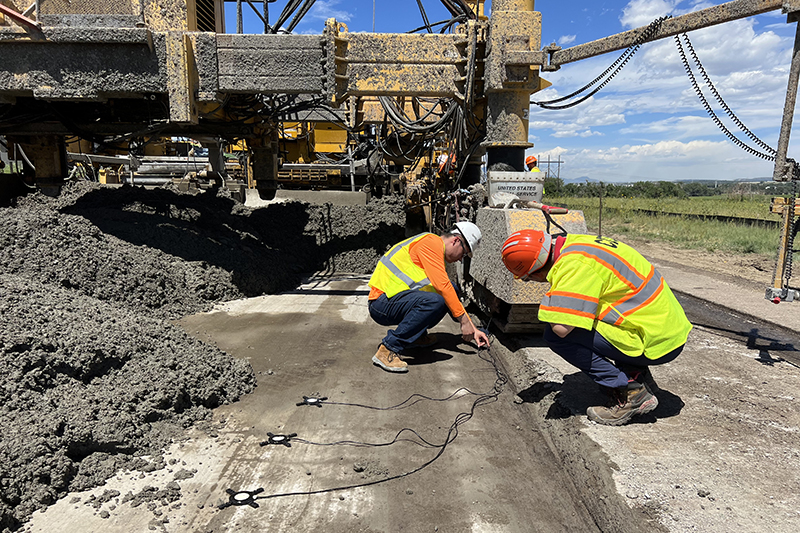
AASHTO – the American Association of State Highway and Transportation Officials – has approved a Purdue University-invented device that uses vibrations to check when concrete has cured.
After seven years of research and development, the university says it could shorten construction times and increase the durability of concrete highways, bridges and other infrastructure.
Concrete pavement makes up less than 2% of US roads but around 20% of the country’s interstate system.
AASHTO’s Committee on Materials and Pavements approved the technology and based a new national standard on it on 31 July.
Good vibes
The device was invented by civil engineering professor Luna Lu, after her team discovered that vibrations in concrete could be used to detect rigidity and other mechanical properties relating to concrete strength.
Sensors in the device vibrate the concrete and convert the mechanical energy of the vibrations back to electrical energy.
By measuring the change in the vibrations’ frequencies over time, the sensors measure gains in strength.
Workers install the sensors before the concrete is poured, either within the reinforcement or directly on the soil foundation, with the cable sticking out.

After the pour, they plug each sensor’s cable into a handheld device that automatically starts logging data.
Lu’s team believe the method will be faster and more accurate than the most common method now: testing samples of hardened concrete at a lab or on-site facility.
The mathematical model Lu’s lab developed to describe the effect of vibrations on concrete was awarded the Alfred Noble Prize from the American Society of Civil Engineers in 2022.
In 2021, Lu founded the start-up Wavelogix to market the device, called REBEL.
The company licenses the technology from Purdue, which has applied for patent protection on the intellectual property.
‘Nothing anywhere else’
The Indiana Department of Transportation (INDOT) has been funding the sensor technology since the beginning of its development.
“The implications of this technology are staggering because everybody who pours concrete — it doesn’t matter whether you’re building a skyscraper or a road — what you want to know is the strength of the concrete so you can move on with construction,” said Mike Nelson, a concrete engineer in INDOT’s Division of Materials and Tests.
“There’s nothing anywhere else in the world that can determine concrete strength in place like this does,” Nelson added.
Beta testing of the technology is underway in 11 states across the Midwest, South and West.
- Subscribe here to get stories about construction around the world in your inbox three times a week
Comments
Comments are closed.











Sounds like a great idea, when will it be available in the UK?